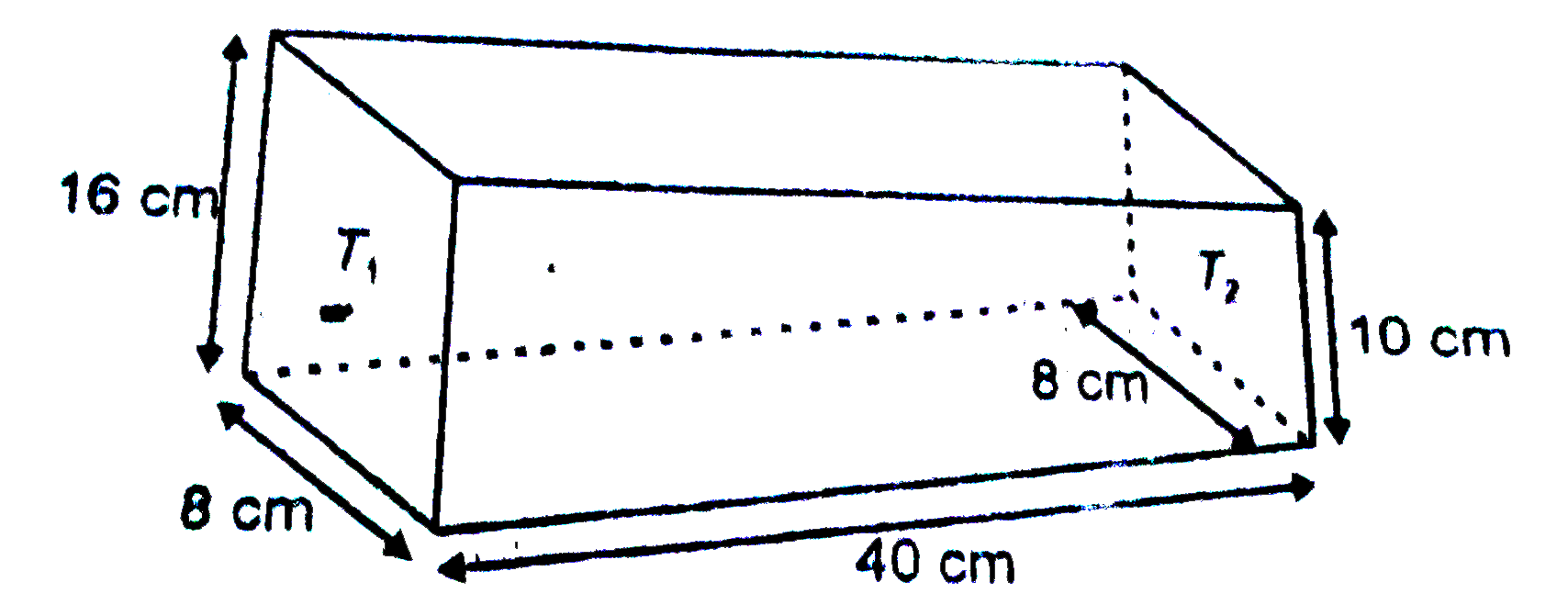A particle executes linear simple harmonic motion with an amplitude of 2 cm . When the particle is at 1 cm from the mean position the magnitude of its velocity is equal to that of its acceleration. Then its time period in seconds is
2π√3
√32π
12π√3
2π√3
Step by step video & image solution for A particle executes linear simple harmonic motion with an amplitude of 2 cm . When the particle is at 1 cm from the mean position the magnitude of its velocity is equal to that of its acceleration. Then its time period in seconds is by Physics experts to help you in doubts & scoring excellent marks in Class 12 exams.
Updated on:21/07/2023Topper's Solved these Questions
Similar Questions
The r.m.s speed of the molecules of an ideal gas Is V0 If pressure of the gas is halved but temperature is kept constant then r.m.s. speed of the gas molecule will be
View SolutionA slab of cunductivity k is in the shape of trapezoid as shown I figure. If the two end faces be maintained at temperature T1=50∘CandT2=25∘C, then determine the thermal current through the slab by ignoring any heat loss through the lateral surfaces.
 .
.
View SolutionA particle executes linear simple harmonic motion with an amplitude of 3 cm . When the particle is at 2 cm from the mean position, the magnitude of its velocity is equal to that of its acceleration. Then, its time period in seconds is
View SolutionA particle executes linear simple harmonic motion with an amplitude of 2 cm . When the particle is at 1 cm from the mean position the magnitude of its velocity is equal to that of its acceleration. Then its time period in seconds is
View SolutionA particle excutes simple harmonic motion with an amplitude of 5 cm. When the particle is at 4 cm from the mean position, the magnitude of its velocity in SI units is equal to that of its acceleration. Then, its periodic time in seconds is
View Solutionकिसी कण की रेखीय सरल आवर्त गति का आयाम 3 सेमी है जब यह कण अपनी मध्य स्थिति से 2 सेमी दूरी पर होती हैफ़ तो उस समय इसके वेग का परिमाण , इसके त्वरण के बराबर होता है इस कण का आवर्तकाल ( सेकण्ड में ) है
View SolutionA particle executes simple harmonic motion with an amplitude of 5cm. When the particle is at 4 cm from the mean position, the magnitude of its velocity in SI units is equal to that of its acceleration. Then its periodic time in seconds is :
View Solutionकिसी कण के रेखीय सरल आवर्त गति का आयाम 5 सेमी है जब यह कण अपनी मध्य स्थिति से 3 सेमी की दूरी पर होता है तब उस समय इसके वेग का परिमाण इसके त्वरण के बराबर होता है। इस कण का आवर्तकाल (सेकंड में ) है -
View SolutionA particle executes linear simple harmonic motion with an amplitude of 3 cm. When the particle is at 2 cm from the mean position, the magnitude of its velocity is equal to that of its acceleration. Then find its time period in seconds.
View Solutionएक कण सरल आवर्त गति करता है। इसका आयाम 2 सेमी है जब कण माध्य स्थिति से 1 सेमी की दुरी पर है, तब इसके वेग का परिमाण इसके त्वरण के बराबर है तब इसका आवर्तकाल सेकण्ड में है
View SolutionA particle executes linear simple harmonic motion with an amplitude of 3 cm. When the particle is at 2 cm from the mean position, the magnitude of its velocity is equal to that of its acceleration. Then its time period in second is…….
View SolutionA particle executes simple harmonic with an amplitude of 5 cm. When the particle is at 4 cm from the mean position the magnitude of its velocity in SI units is equal to that of its acceleration. Then, its periodic time in seconds is
View SolutionA particle excutes simple harmonic motion with an amplitude of 5 cm. When the particle is at 4 cm from the mean position, the magnitude of its velocity in SI units is equal to that of its acceleration. Then, its periodic time in seconds is
View SolutionA particle executes linear simple harmonic motion wit an amplitude of 3 cm. When the particle is at, 2 cm from the mean position, the magnitude of its velocity is equal to that of its acceleration. Then its time period in seconds is
View SolutionA particle executes linear simple harmonic motion with an amplitude of 2 cm . When the particle is at 1 cm from the mean position the magnitude of its velocity is equal to that of its acceleration. Then its time period in seconds is
View SolutionA particle executes linear simple harmonic motion with an amplitude of 2 cm . When the particle is at 1 cm from the mean position the magnitude of its velocity is equal to that of its acceleration. Then its time period in seconds is
View Solution
